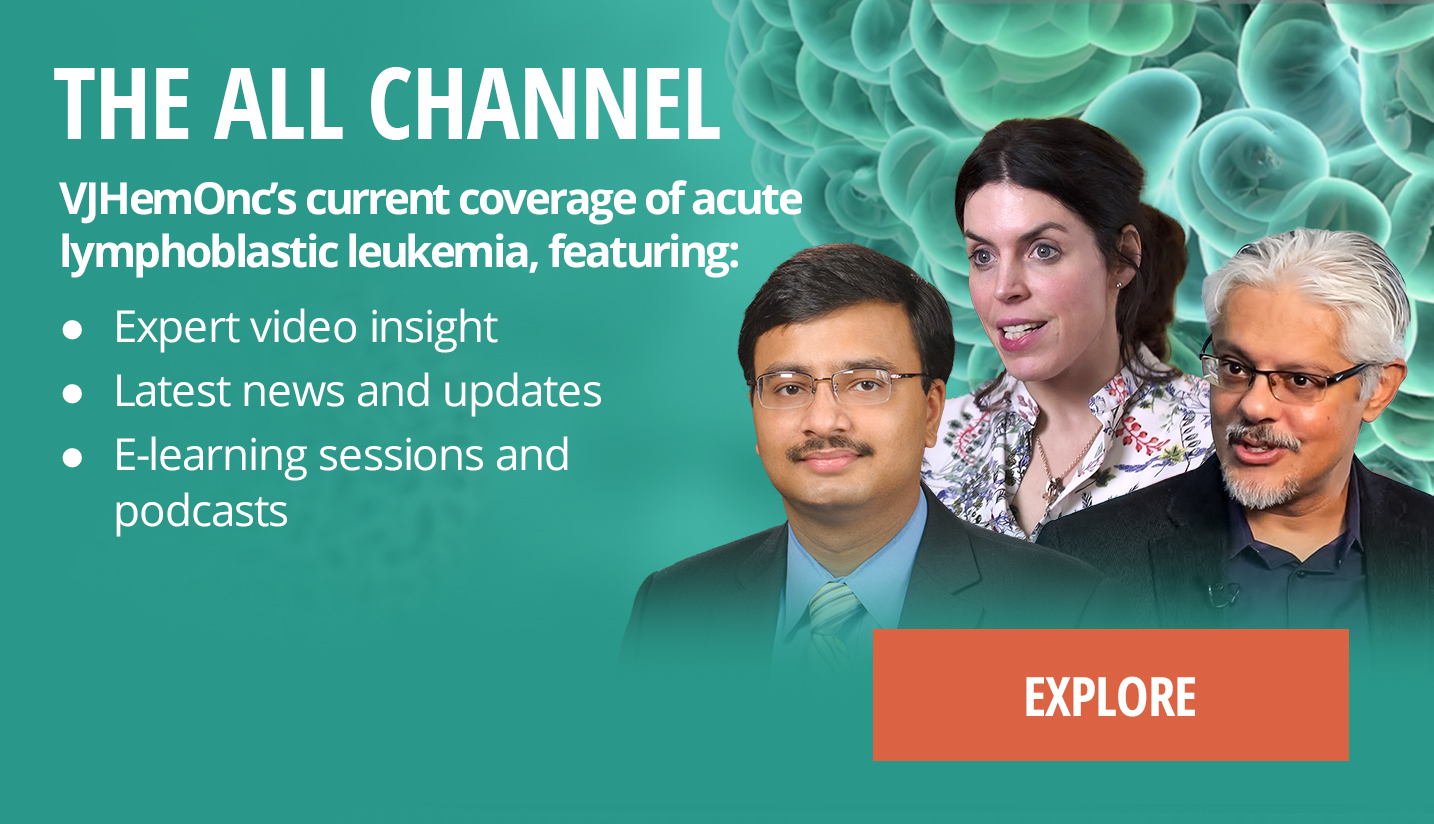The targeted therapy of T cell malignancies has been problematic. That’s one of the reasons why no one’s developed cellular and immunotherapies to T-cell cancers, because the cells that we use to target T cell malignancies are T-cells themselves. Any target you would go after in a T-cell malignancy is also expressed on the effector T-cells, so when you make a CAR with a T-cell to target on a T-cell malignancy, the CAR-T cell, will see it on itself essentially and kill itself and that’s called fratricide, there has been several approaches to get around that...
The targeted therapy of T cell malignancies has been problematic. That’s one of the reasons why no one’s developed cellular and immunotherapies to T-cell cancers, because the cells that we use to target T cell malignancies are T-cells themselves. Any target you would go after in a T-cell malignancy is also expressed on the effector T-cells, so when you make a CAR with a T-cell to target on a T-cell malignancy, the CAR-T cell, will see it on itself essentially and kill itself and that’s called fratricide, there has been several approaches to get around that. We have taken an approach of using gene editing or CRISPR to eliminate the target on the effector T-cell so, it doesn’t exist on the effector T-cell before putting the CAR into those T-cells so that fratricide does not occur. That allows these cells to actually survive in vivo and in vitro to kill the tumor cells.
That’s the first step; the second step is the sense that normal T-cells that house these CARs and the T-cell malignancies are phenotypically similar. There’s going to be a problem always with separation of normal and malignant T-cells to put the CAR into these normal T-cells and to genetically modify them with CRISPR gene editing. There’s always going to be that risk of having contaminated malignant cells in there when you do the gene editing. If you gene edit out the target that you’re going after in a few contaminating malignant cells, when you make these gene-edited CARs they’re going to be inherently resistant to the therapy. To get around that, one can use off-the-shelf allogeneic T-cells and this is obviously going to be a source of T-cells for CAR T-cell generation which are free of tumor because they’re coming from a normal donor, but they’re not identical to the host that has the malignancy.
When infused into the host, they could cause severe graft versus host disease. To get around that one can also eliminate components of the T-cell receptor in those T-cells using the same general approach, gene editing or base editing to eliminate the T-cell receptors so that those T-cells no longer view the host as nonself and can be used. The final obstacle will be to allow on the host to accept those mismatched allogeneic off-the-shelf T-cells so that can actually expand in the host and not be immediately rejected by the host immune system. To do that it’s possible that just conditioning might be the trick, but there may be other approaches that are necessary to enhance the persistence and expansion of these donor T-cells. Those are the obstacles and problems with doing this so we’ve developed multiplex CRISPR gene editing approaches to eliminate the target that we’re going after in these malignant T cells and the primary target that we’ve looked at has been CD7 and, the secondary target is CD2 although there are other targets as well.
The second is we figured out to how to eliminate with high efficiency, both CD7 or CD2 plus the T-cell receptor by a multiplex gene editing. Then to put a CAR into those gene edited T-cells with high efficiency and show in mouse models that this is very effective at eliminating cell lines that are T-cell lines or primary T-cell malignancies, both non-Hodgkin’s lymphoma and T-cell ALL in mouse models. This has to be carried into the clinic and there have been several groups that I’ll discuss in my talk, which have done this at least initially, one group at Baylor is focused on CD5 which does not appear to require that gene editing step. There’s a group in China that are doing similar work to what we’ve been doing, focusing on CD7 in particular using gene edited CAR-T’s.
The future for targeting T-cell malignancies with these CAR-T’s actually looks quite encouraging so there’s feasibility. I think it can be done and it can be done safely without too many off target effects throughout the genome, by gene editing and that we can generate CAR-T’s that are gene edited so that they can be given as an off-the-shelf free agent. Which has lots of advantages, including we can prepare these in advance so you don’t have to actually get them from the patient themselves, which is a big problem with patients with acute leukemia, where these cells are circulating in the blood.
And also they can be essentially stored in advance and then given immediately and just thought and given. There’s an immediate way to actually get a patient treated as opposed to trying to collect enough of their own T-cells and then expand those T-cells. In a non-Hodgkin’s lymphoma world, as many as 20 to 25% of patients never make it that far because they progressed during the collection phase, or they have a failure to produce enough CAR-T’s, or the CAR T-cell quality is poor, or they just don’t have enough T-cells to actually make CAR-T’s in the first place.
That’s the sum and substance of what I’m going to be speaking about at SOHO and also talking about ways to minimize some of the major other obstacles of CAR T-cell therapy in general. That is how to minimize cytokine release syndrome and neurotoxicity by actually modifying the genetic component of the CAR-Ts or by providing certain drugs that reduce the possibility of CRS. Also, to enhance expansion and persistence of the CAR T-cells by using various cytokines that have a specific effect on both expanding and enhancing proliferation of CAR-T’s, but also enhancing their overall survival. There are several cytokines that we’ve been looking at, but one of them in particular is a long acting IL7 analog and we’re very excited about this and ready to test this in the first human clinical trials in non-Hodgkin’s lymphoma.
















